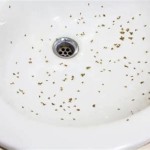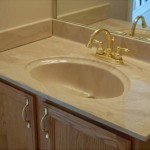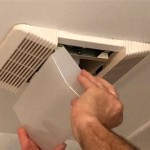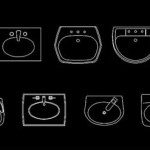How to Replace Drain Pipes Under a Bathroom Sink
Replacing drain pipes under a bathroom sink might seem daunting, but with the right tools, preparation, and a methodical approach, it's a manageable task for a homeowner. This article provides a comprehensive guide to help navigate the process, from identifying the problem to completing the installation.
Before embarking on this project, it's crucial to understand the components involved. The drain assembly under a bathroom sink typically consists of several key parts. The tailpiece is the vertical pipe that connects directly to the sink drain. Below the tailpiece is the P-trap, a U-shaped pipe designed to hold water, creating a seal that prevents sewer gases from entering the bathroom. The drain extension connects the P-trap to the drainpipe in the wall. These pipes are usually made of PVC or chrome-plated brass, and they are connected using slip nuts and washers.
Identifying the Problem
The first step in replacing drain pipes is to accurately diagnose the problem. Common issues include leaks, clogs, and corrosion. Leaks often manifest as drips or puddles under the sink, and they can originate from loose connections, cracks in the pipes, or deteriorated washers. A persistent slow drain is usually a sign of a clog, either in the P-trap or further down the drain line. Corrosion, particularly in older metal pipes, can lead to weakened pipes and eventual failure. A visual inspection will often reveal the source of the problem.
If a leak is suspected, carefully examine all connections for signs of water. Run the faucet and observe the pipes for any drips. Check the P-trap for cracks or damage. Corrosion is often visible as rust or scaling on metal pipes. If the drain is slow, consider attempting to clear the clog before resorting to replacement. A plunger or drain snake might be sufficient to dislodge the blockage.
If the problem is beyond a simple clog or a loose connection, replacement is likely necessary. Replacing only the affected section of the drainpipe is often possible, but if the entire assembly is old or corroded, replacing all of it is recommended to avoid future problems.
Gathering Necessary Tools and Materials
Having the right tools and materials on hand is crucial for a smooth and efficient drain pipe replacement. This will minimize delays and ensure the job is done correctly. Here is a list of essential items:
- Adjustable wrench: To loosen and tighten slip nuts.
- Pipe wrench: For stubborn or corroded connections.
- Channel-lock pliers: Useful for gripping pipes and fittings.
- Screwdriver (Phillips and flathead): Depending on the sink drain type.
- Utility knife: For cutting PVC pipe if necessary.
- Hacksaw or pipe cutter: Alternative to a utility knife for cutting PVC pipe.
- Bucket: To catch water and debris.
- Plumber's tape (Teflon tape): To seal threaded connections.
- New drain pipes and fittings: Including tailpiece, P-trap, drain extension, slip nuts, and washers. Ensure the new components are compatible with the existing plumbing.
- Measuring tape: To measure pipe lengths accurately.
- Safety glasses: To protect eyes from debris.
- Gloves: To protect hands from dirt and grime.
- Old towels or rags: To clean up spills.
When selecting new drain pipes, consider the material. PVC is a popular choice due to its affordability and ease of installation. Chrome-plated brass is more aesthetically pleasing but also more expensive and potentially more susceptible to corrosion in some environments. Ensure that the new pipes are the correct diameter to match the existing drainpipe in the wall.
Step-by-Step Replacement Process
With the problem identified and the necessary tools and materials gathered, the actual replacement process can begin. Here's a detailed guide:
- Turn off the water supply: Locate the shut-off valves under the sink and turn them clockwise to shut off the hot and cold water supply. If there are no individual shut-off valves, the main water supply to the house must be turned off.
- Prepare the work area: Place a bucket under the drain pipes to catch any remaining water in the P-trap. Cover the surrounding area with old towels or rags to protect it from spills.
- Disassemble the old drain pipes: Using an adjustable wrench, loosen the slip nuts connecting the tailpiece, P-trap, and drain extension. Work carefully to avoid damaging the surrounding plumbing. Start with the slip nuts closest to the wall drain. Once the nuts are loosened, carefully detach the pipes, allowing any remaining water to drain into the bucket.
- Remove the old tailpiece: The tailpiece is connected to the sink drain flange. Depending on the sink drain type, it may be held in place by a nut underneath the sink. Loosen this nut and remove the old tailpiece. If the nut is corroded or difficult to remove, penetrating oil may help.
- Clean the sink drain flange: Remove any old putty or sealant from the sink drain flange. Ensure the flange is clean and free of debris. This will provide a good surface for the new putty or sealant.
- Install the new tailpiece: Apply a bead of plumber's putty around the underside of the sink drain flange. Insert the new tailpiece into the flange and secure it with the nut underneath the sink. Tighten the nut securely, but avoid overtightening, which could crack the sink.
- Assemble the new drain pipes: Begin by attaching the P-trap to the tailpiece. Place a slip nut and washer on the tailpiece, then connect the P-trap. Tighten the slip nut by hand, then use an adjustable wrench to tighten it further, but avoid overtightening.
- Connect the drain extension: Measure the distance between the P-trap outlet and the drainpipe in the wall. Cut the drain extension to the appropriate length using a utility knife, hacksaw, or pipe cutter. Ensure the cut is clean and straight. Place a slip nut and washer on the drain extension, then connect it to the P-trap and the drainpipe in the wall. Tighten the slip nuts securely.
- Check for leaks: Turn on the water supply slowly and check for leaks at all connections. If leaks are present, tighten the slip nuts further. If the leaks persist, disassemble the connection, inspect the washers for damage, and reassemble, ensuring the washers are properly seated.
- Test the drain: Run water into the sink to ensure the drain is flowing freely. Check for any signs of clogs or slow drainage. If the drain is slow, use a plunger or drain snake to clear any obstructions.
- Clean up: Once you are satisfied that the drain is working properly and there are no leaks, clean up the work area. Dispose of the old drain pipes and fittings properly.
Dealing with Common Challenges
While replacing drain pipes is generally a straightforward process, some common challenges can arise. Knowing how to address these challenges can prevent frustration and ensure a successful outcome.
Stubborn slip nuts: Older slip nuts can become corroded and difficult to loosen. Applying penetrating oil to the threads and allowing it to soak for a few minutes can help. If the nut is still stubborn, try using a pipe wrench or channel-lock pliers for added leverage. Be careful not to damage the nut or the surrounding pipes.
Mismatched pipe sizes: If the new drain pipes are not the same size as the existing drainpipe in the wall, adapters may be necessary. Adapters are available at most hardware stores and come in various sizes to accommodate different pipe diameters. Ensure the adapter is compatible with both the new drain pipe and the existing drainpipe.
Leaks at connections: Leaks after installation are often due to improperly seated washers or overtightened slip nuts. Disassemble the connection, inspect the washer for damage, and ensure it is properly seated. Reassemble the connection and tighten the slip nut, but avoid overtightening, which can damage the washer. If the leaks persist, apply plumber's tape to the threads of the connections.
Difficult access: Working in the confined space under a bathroom sink can be challenging. Consider using a small stool or kneeling pad to make the job more comfortable. A headlamp can also be helpful for illuminating the work area. If access is particularly difficult, consider removing the items stored under the sink to create more space.
By carefully following these steps and addressing potential challenges proactively, replacing drain pipes under a bathroom sink can be a successful DIY project, saving money and gaining a sense of accomplishment.

How To Install A Pipe From Sink Drain Wall Ehow

How To Install P Trap And Bathroom Sink Drain Piping Easy Installation For Beginners

Replace A Trap And Add Cleanout Fine Homebuilding

How To Change J Pipe Under A Bathroom Sink Ehow
How To Install Bathroom Sink Drain Queen Bee Of Honey Dos

Bathroom Sink Plumbing Installation Diy Montreal

How To Fix Or Replace A Leaky Sink Trap Hometips

Bathroom Sink Plumbing Installation Diy Montreal

How To Easily Connect The Plumbing For A New Bathroom Sink Hometips

Bathroom Sink Drain Leaking Around Threads Premier Plumbing Inc







